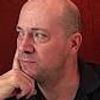All these years later, we are still fascinated and flummoxed by the Kennedy assassination. Was there are conspiracy? Was it the act of a lone gunman? Were Lee Harvey Oswald and his killer, Jack Ruby, connected beforehand in some way? Was it the Mob? Castro? Rogue elements of the CIA?
Well, as someone who has read a truly embarrassing amount about the Kennedy assassination, let me save you some time. Why reinvent the wheel? Allow me to walk you through my journey and see where we end up.
At first, when you don't know too much about that awful day, one is at the "C'mon!" stage. As in "C'mon!... there had to be more to it than just some twisted little nut and his twelve dollar, mail order rifle!"
Puzzled but fascinated, I read a bunch of books about various conspiracy theories; like On The Trail Of The Assassins, by former Orleans Parish District Attorney Jim Garrison. Garrison serves up a motley mix of shadowy elements in the government and beyond, who conspired flawlessly to kill President Kennedy. As far as Garrison was concerned, the military was in on it, the CIA, the Dallas police, all sorts of people. Garrison's book would become the basis for Oliver Stone's hit film JFK, starring Kevin Costner.
At that point of the game, my feeling was that the Kennedy assassination was most likely carried out by the Mob; possibly with some sort of Castro assist, or maybe even rogue CIA involvement. After all, Kennedy had been famously unhappy with the CIA after the Bay of Pigs debacle and had even threatened to shut them down.
Then, about ten books in, I read Gerald Posner's book Case Closed, and everything changed. For one thing, Posner introduced a startling fact that most conspiracy theorists either don't know or don't want to accept. That is, that about six months before the Kennedy assassination, Lee Oswald tried to kill retired Army Major General Edwin Walker, with a sniper shot into Walker's Dallas home. At that time, Walker was a conservative firebrand and possible future presidential candidate. The shot missed but reportedly parted the hair on the top of Walker's head. Oswald wrote bitterly about his missed shot at Walker in his diary. Oswald planned the killing for weeks, and according to his wife Marina, he was devastated by the failure. Bottom line, Lee Oswald was an attempted political assassin before President Kennedy ever came to town. That fact changes everything. Oswald can no longer be seen as the "patsy" he called himself.
Posner went on to write about Lee's self-proclaimed "Historic Diary," and how Lee perceived himself as a man of destiny. Lee felt that his "defection" to Russia, as a former U.S. Marine, was going to make him famous. Then he thought that his return to America would do the trick. No reporters met him at the airport. Then, he wanted to defect to Cuba. Nothing seemed to be working for Lee. By November of 1963 Lee Oswald was desperate.
And then, it just fell into his lap. President Kennedy's motorcade would be driving right by Lee's job, at the Texas Schoolbook Depository, on Dealey Plaza. Unlike the Walker attempt, almost no planning was required to kill the president of the United States. Lee brought his rifle to work that day, wrapped in paper, telling his friend who drove that it was "curtain rods" for his rooming house.
And the rest is history.
After shooting Kennedy, Lee did not appear to have much of an exit strategy. Following a brief encounter with a policeman in the break room of the depository, Lee left his job and got on a city bus, as he did not own a car or even know how to drive. Then, when the bus was snagged in the chaos after the killing, Lee got off and got in a nearby taxi and went home to his rooming house, where he put on a jacket and got his pistol. Lee then went out walking; jacked up on adrenaline and ready for a showdown. Within minutes, Lee was stopped by a Dallas police officer, J.D. Tippit, after Tippit, realized that Lee fit the description of the suspected Kennedy assassin. Lee gunned down Tippit, as he got out of his patrol car and was soon caught as he ducked into a movie theater.
Meanwhile, local character and strip club owner Jack Ruby was making himself useful at the police station, explaining to the now assembled national media, who all the Dallas police were. Apparently, Ruby, who encouraged a steady police presence at his club and got one, was considered a harmless crank by most who knew him. Though, he adored President Kennedy, and told several friends and his sister, after the assassination, that if he got a chance he would shoot that little smirking punk Oswald.
And so in a bizarre and tragic dance, that would leave people second guessing for decades, Ruby walked down a ramp into the basement of the Dallas police station, while Oswald was being transferred to the county jail, and shot Oswald at point blank range. Ruby's ill-fated, impulsive act prevented the world from ever hearing Oswald's story.
While conspiracy theorists spin their yarns, they are missing a tragedy of Shakespearean proportions. The sad tale of two losers who yearned for greatness and lost.
